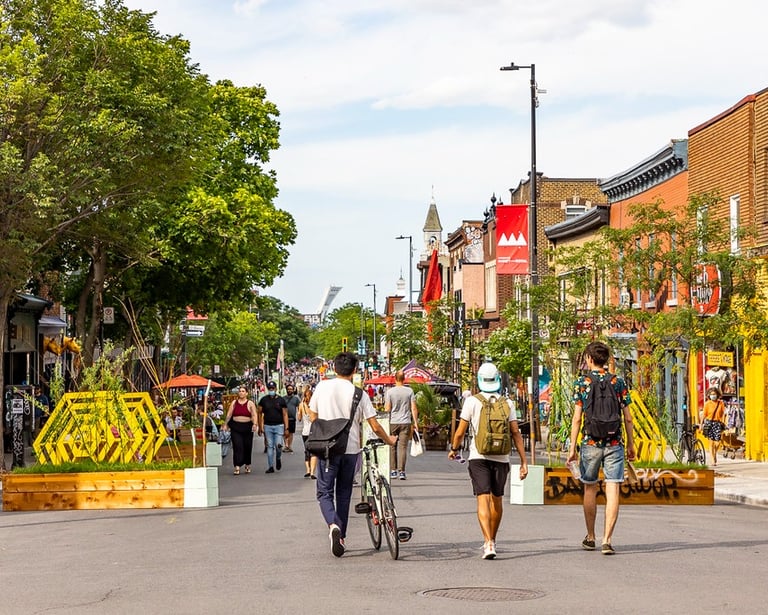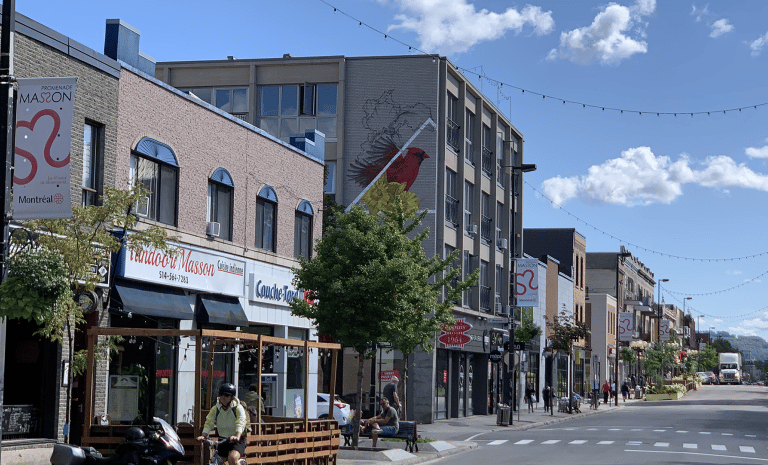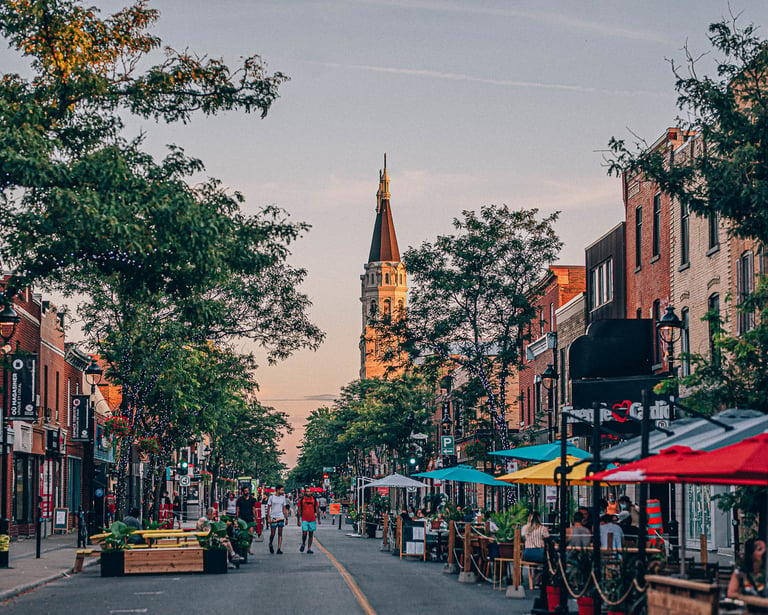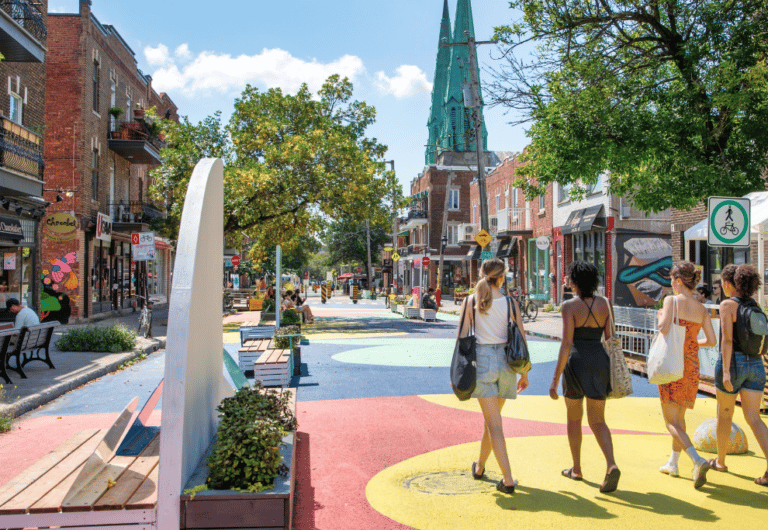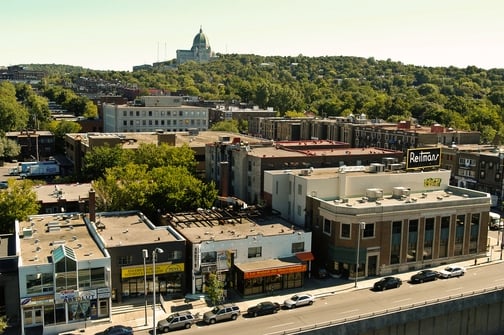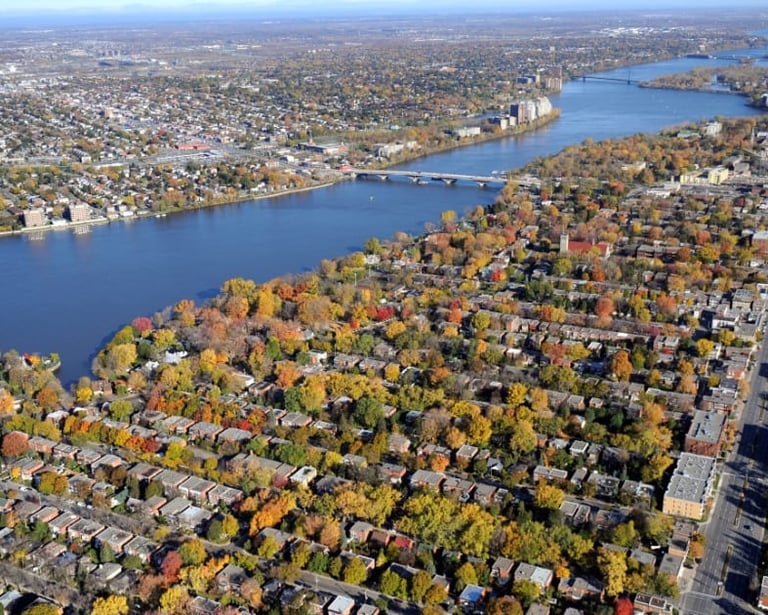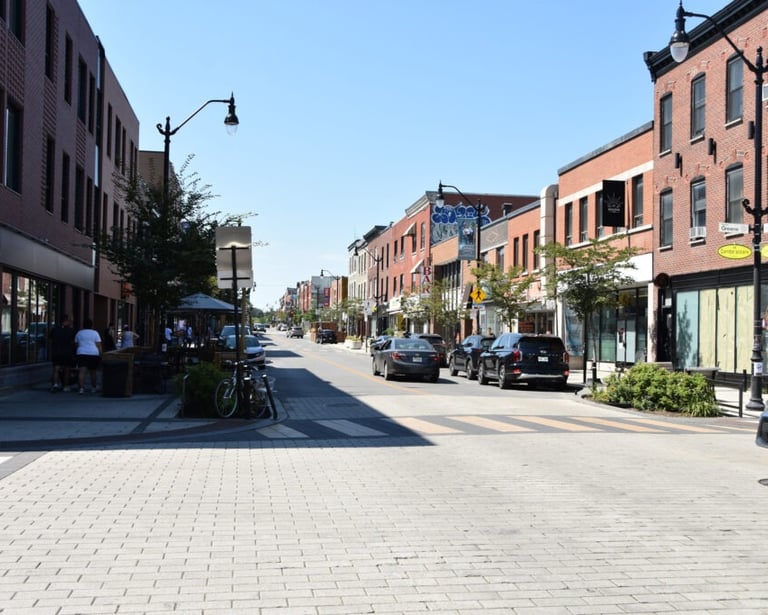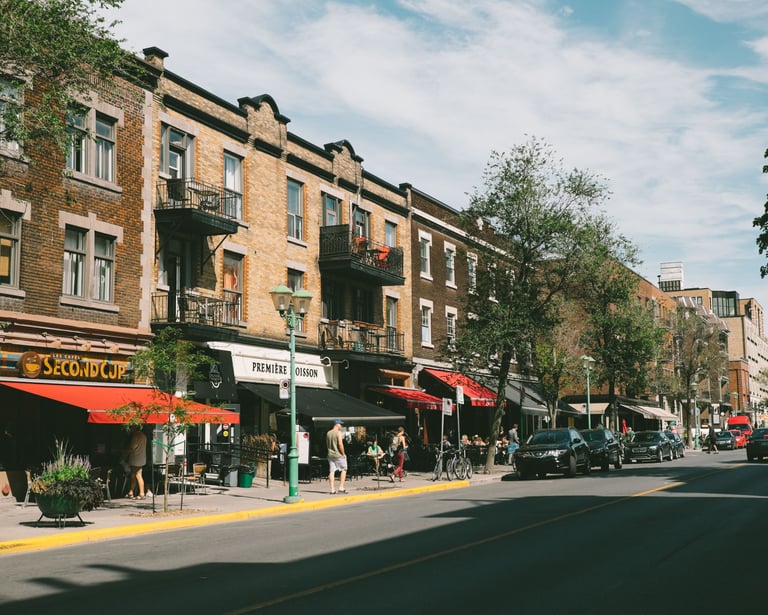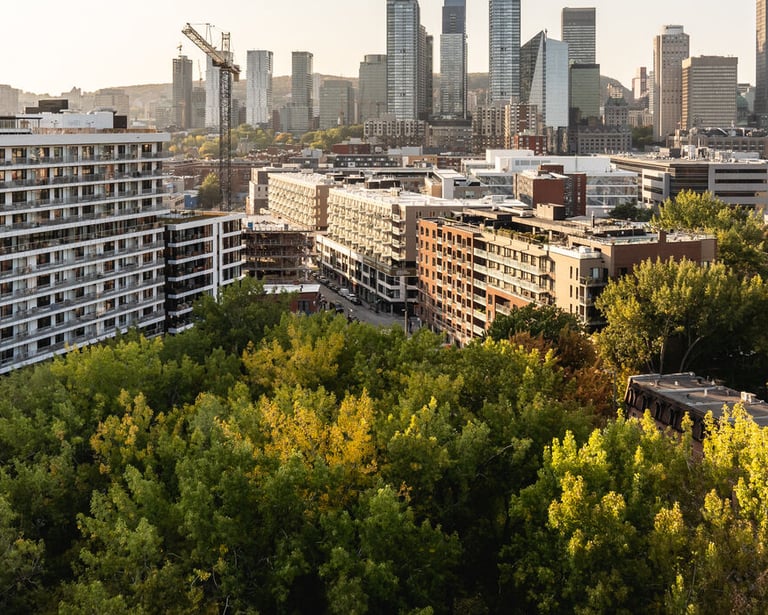The Best Neighborhoods in Montréal for Newcomers in 2025
Choosing where to live is one of the most important—and overwhelming—decisions you’ll face as a newcomer to Montréal. With its patchwork of languages, cultures, and architectural styles, Montréal isn’t just one city—it’s a dozen small worlds stitched together. Whether you're here for study, work, or a new start, this guide will help you find the neighborhood that fits your lifestyle, budget, and ambitions.
What Makes a Good Neighborhood for Newcomers?
Before we dive in, let’s define what “best” means in the context of immigration and settling in:
Affordable rent (or at least reasonable value)
Access to transit (being near a metro station changes everything)
Safety and a sense of community
Cultural diversity and availability of services in multiple languages
Walkability and proximity to grocery stores, pharmacies, parks, and cafés
Everyone has different priorities, of course. For some, being close to their cultural community is essential. For others, it’s finding a quiet street, good daycare, or a thriving arts scene. That’s the beauty of Montréal—you’re rarely more than a few metro stops away from a completely different vibe. So don’t worry if you’re still unsure. You’re not picking forever. You’re choosing where your Montréal chapter begins.
With that in mind, here are Montréal’s top neighborhoods for newcomers in 2025, based on fresh insights, real estate data, and lived experience.
1. Le Plateau-Mont-Royal
If you're coming from Europe—especially France—Le Plateau might feel like a soft landing. Tree-lined streets, spiral staircases, and endless cafés give it a familiar charm. French is widely spoken, and it’s home to a large expat community.
Le Plateau is also known for its classic triplexes and colorful murals. You’ll find everything from independent bookstores and vegan bakeries to underground comedy shows and pop-up art galleries. It has a mix of long-time residents, students, and new arrivals from around the world.
Despite its gentrification, the Plateau retains a sense of rebellious identity. It’s not unusual to see political posters in windows or watch a neighbor turn their balcony into a mini-jungle. The streets come alive in summer with street fairs, outdoor music, and café culture that spills onto the sidewalks.
Pros: Culturally vibrant, near downtown, full of shops and cafés
Cons: Expensive rent, noisy at night, competitive housing market
Best for: French speakers, artists, freelancers, café lovers
Insider Tip:
For a slightly quieter Plateau experience, look around Laurier East or the streets bordering Parc Lafontaine. You’ll still be in the heart of the action but with more green and a bit less noise.
2. Rosemont–La Petite-Patrie
A more affordable alternative to the Plateau with a similar lifestyle. It’s a favorite among young families and creative professionals, with plenty of green spaces, local markets like Jean-Talon, and excellent public transit.
In addition to its residential charm, Rosemont is home to one of the city’s most walkable areas. You can spend your weekends at indie cinemas, organic food co-ops, or quiet terraces sipping local cider. There’s a distinctly local, low-key vibe.
This neighborhood also offers more square footage than the Plateau for the same price, especially in the areas east of Iberville. Public services like libraries, CLSCs (local health centers), and public pools are well integrated here, and most things can be done on foot or by bike.
Pros: Family-friendly, affordable for its location, good parks
Cons: Still gentrifying in places, limited English services
Best for: Families, French learners, urban explorers
Insider Tip:
If you like markets, Jean-Talon is a must-visit. But don't overlook Marché Rosemont, a smaller but very local market that captures the area's community spirit.
3. Verdun
Once overlooked, Verdun has become one of the most sought-after neighborhoods. It borders the St. Lawrence River and has a cool, relaxed vibe, lots of green space, and a growing number of trendy restaurants. And yes, it has its own beach.
The addition of de l'Église pedestrian zone and the revival of Wellington Street have turned Verdun into a livable, walkable urban village. Despite its rising popularity, rents are still relatively moderate compared to core downtown areas.
Verdun’s real charm lies in its accessibility to nature. The waterfront parks stretch for miles, offering bike paths, picnic areas, and even free yoga classes in summer. There’s also a strong community vibe, with neighborhood festivals and public art events making it feel like a village within the city.
Pros: Affordable, safe, riverside views, green spaces
Cons: Slightly farther from downtown, rent is rising fast
Best for: Nature lovers, young professionals, people with kids
Insider Tip:
Take a summer walk from the Verdun metro down to the river and stop for ice cream at Crèmerie Dalla Rose. The sunset views at the Verdun beach are worth every step.
4. Villeray–Saint-Michel–Parc-Extension
These are three adjoining areas with distinct vibes. Villeray is quiet and family-oriented; Parc-Ex is busy, diverse, and more affordable; Saint-Michel is large, varied, and still evolving.
Parc-Ex is one of the most ethnically diverse places in the city. You’ll find South Asian grocers next to Greek bakeries and West African barbershops. Villeray, on the other hand, boasts green corridors like Jarry Park and a growing foodie scene.
This is also one of the most bike-friendly areas in the city, with several safe lanes and access to the Réseau Express Vélo (REV). The diversity of cultures means you can find fresh samosas, spicy injera, and French patisseries all within a few blocks.
Pros: Multicultural, budget-friendly, accessible by metro
Cons: Less polished, variable building quality, some noise
Best for: Immigrants from South Asia, Latin America, North Africa; budget-conscious newcomers
Insider Tip:
Villeray’s community gardens are legendary. Apply early in the year if you want a plot. It's a great way to meet locals and grow your own herbs and vegetables.
5. Côte-des-Neiges–Notre-Dame-de-Grâce (NDG)
This borough is home to multiple universities (Université de Montréal, Concordia Loyola campus) and has a significant student and newcomer population. NDG, in particular, is more anglophone and community-oriented.
Expect to hear a dozen languages in a single day. Côte-des-Neiges is vibrant and densely populated, while NDG has tree-lined streets and a strong community vibe. Both offer relatively affordable rents and access to the blue and orange metro lines.
There are countless ethnic food spots, from Lebanese bakeries to Filipino grocery stores. In NDG, the Benny Library and cultural center offer free events and activities, and families will find lots of public parks and splash pads.
Pros: Diverse, good transit, educational hubs, anglophone services
Cons: Uneven development, older buildings
Best for: Students, international families, English speakers
Insider Tip:
If you’re an English speaker looking for a welcoming, family-friendly vibe, check out the area around Monkland Village in NDG. It’s quaint, safe, and has some of the city’s best cafés.
6. Ahuntsic-Cartierville
Located in the northern part of the city, Ahuntsic-Cartierville is a hidden gem for newcomers who prioritize peace and space. It doesn’t have the hype of neighborhoods like the Plateau or Griffintown, but what it lacks in trendiness, it makes up for in calm, quality of life, and affordability.
Ahuntsic boasts large green spaces like Parc de l’Île-de-la-Visitation, which borders the Rivière des Prairies. You’ll find riverside bike paths, scenic picnic areas, and even ruins of old mills. Despite being more suburban in feel, the area is well connected to downtown via the orange metro line (Henri-Bourassa and Sauvé stations).
The neighborhood is also home to Collège Ahuntsic and a number of francophone institutions, making it an ideal place to learn French or immerse yourself in a local setting. Immigrant families from North Africa, Haiti, and Latin America have long called Ahuntsic home, and community integration is strong.
Pros: Quiet, family-friendly, spacious housing, green space
Cons: Farther from downtown, fewer English-language services
Best for: Families, French learners, those looking for calm and affordability
Insider Tip:
Walk along the Promenade Fleury, a charming commercial strip full of bakeries, bookshops, and family-run restaurants. It's the beating heart of the neighborhood.
7. Saint-Henri
Saint-Henri is one of the city’s most rapidly transformed neighborhoods. Nestled alongside the Lachine Canal in the southwest, it has morphed from a working-class district into a fashionable destination for young professionals, creatives, and tech workers.
What sets Saint-Henri apart is its industrial-chic character. Many old warehouses have been converted into loft-style condos, coworking spaces, and artist studios. The Atwater Market, a major food destination, anchors the neighborhood and draws visitors from all over the city.
You’re close to downtown, have access to green canal paths for jogging and cycling, and can enjoy a dynamic mix of old and new architecture. The area does face gentrification challenges, but it still offers pockets of authenticity and affordability if you explore deeply enough.
Pros: Near downtown, vibrant food scene, canal access, great for cycling
Cons: Rising rent, ongoing gentrification, mixed building quality
Best for: Young professionals, food lovers, tech workers
Insider Tip:
Try brunch at Arthurs Nosh Bar, a Saint-Henri institution. Then take a bike ride down the Lachine Canal path all the way to the Old Port.
8. Outremont
Outremont is one of Montréal’s most elegant and affluent neighborhoods. Known for its charming streets lined with mature trees, majestic triplexes, and refined boutiques, it is also a stronghold of francophone culture.
The area is primarily residential, offering a tranquil atmosphere without sacrificing access to good schools, bakeries, and cultural venues. It is home to a large population of Hasidic Jewish families, which adds an additional layer of cultural depth and identity.
While prices are high and English services less widespread, those who can afford to live in Outremont often fall in love with its calm, stately rhythm and proximity to Mount Royal Park.
Pros: Upscale, serene, French immersion, great for families
Cons: High rent, not very anglophone-friendly
Best for: Francophones, high-income earners, families seeking quiet elegance
Insider Tip:
Stroll down Avenue Bernard to find some of the city’s best bakeries and independent shops, or enjoy a picnic in Parc Outremont with a view of the classic row homes.
9. Griffintown
Griffintown is sleek, shiny, and central. If you’re looking for something modern, close to downtown, and easy to navigate, this rapidly redeveloped area might be for you. Think glass condo towers, smart buildings, coworking spaces, and fast access to bike paths and public transit.
Originally an Irish working-class neighborhood, Griffintown has been transformed into a high-rise community for young professionals and international students. While it lacks the history and charm of older neighborhoods, its location is unbeatable.
The area has excellent access to both downtown and the Lachine Canal and offers walkability to restaurants, bars, and even corporate offices. That said, it’s one of the pricier spots in the city, and newcomers on a tight budget might feel squeezed.
Pros: Modern living, close to downtown, excellent amenities
Cons: Expensive, little cultural character, lots of construction
Best for: Urban professionals, international students, tech workers
Insider Tip:
If you’re working downtown but want a newer apartment with a gym, pool, and parking, look at newer buildings along Rue Peel or Ottawa Street.
Final Thoughts and Tips for Choosing the Right Neighborhood
Montréal is a city of contrasts, history, reinvention, and surprises. What makes it especially welcoming to newcomers is that there's no single way to belong here. Whether you're looking for a tight-knit immigrant community, a family-oriented area, or a buzzing hub of creativity, there is a place that fits your needs.
Here are some final tips to help you make the right choice:
1. Visit Neighborhoods in Person (or Virtually)
Spend a weekend walking around a few places you’re curious about. Grab a coffee, visit a local park, and just observe. Take note of who lives there, how safe it feels, and what amenities are nearby. If you're abroad, many neighborhoods have dedicated Facebook groups or Instagram accounts where you can get a sense of the local vibe.
2. Think Long-Term Affordability
While it’s tempting to move into the most “Instagrammable” part of town, consider how rent trends and availability might change in a year. A great compromise is often found just one or two metro stops beyond the more popular zones.
3. Be Open to Transition Zones
Neighborhoods that are in transition—like parts of Hochelaga, Saint-Michel, or even Lachine—can offer a unique mix of affordability and authenticity. You may be part of a changing area, helping build new community roots.
4. Use Community Resources
Look for local settlement organizations like the YMCA’s newcomer programs, cultural community centers, and borough websites. They often have events, legal clinics, or housing workshops that help you settle in quickly.
5. Don’t Stress Over “Perfect”
It’s okay if your first Montréal apartment isn’t your forever home. Many people move neighborhoods after a year or two once they understand the city better. Think of this as your launchpad.
A Final Word
As you build your life here—from your first bagel in Mile End to your first snowfall in Parc Jarry—remember that settling takes time. Montréal is not just about where you live, but how you live. The language, the friendships, the quirks of your local dépanneur—all of it becomes part of your story.
So wherever you land—whether it’s in a cozy walk-up in Villeray or a high-rise in Griffintown—Bienvenue à Montréal.You’re home.
Mike B.
